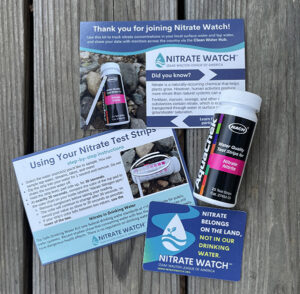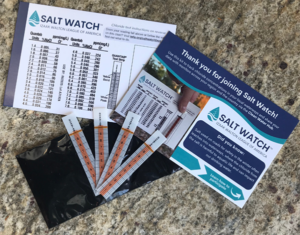Protection for the nation’s clean water has been the centerpiece of the League’s mission since 1922. Our advocacy culminated in the 1972 Clean Water Act, and the League spent the next 50 years strengthening and defending that achievement. In 2023, the Supreme Court’s Sackett v. EPA decision drastically narrowed the scope of the law, eliminating protections for most wetlands and millions of miles of streams.
Now we must conserve wetlands using every tool available and prevent pollution at the source by keeping a watch on local streams and wetlands. The League is already engaged in both efforts. Ultimately, we must convince Congress to strengthen the Clean Water Act. The League is mobilizing a grassroots movement that pressures lawmakers to act.
Volunteers are stepping into the gap to ensure our water is safe, and the Izaak Walton League is the only organization training, equipping and coordinating these volunteers on a national scale.
What’s In My Water?
And What Can I Do About It?
Today, water pollution can come from many sources – some of them right in our own communities! The safety and quality of our nation’s water can be damaged by:
Harmful Agricultural Practices
While many farmers work hard to protect land and water for all of us, some less sustainable practices are still common. For example, spraying crops with heavy doses of pesticides and fertilizers can cause these chemicals to end up in waterways, while leaving fields bare over the winter can result in streams becoming clogged with eroded soil.
Excessive Use of Road Salt
Salt on roads and sidewalks helps us travel safely in the winter. But when it’s used in excessive amounts, the salt winds up in nearby streams, creating conditions that freshwater critters can’t survive. Plus, the salt can end up back in our drinking water systems, where it corrodes pipes and can pose a health threat for people who need low-sodium diets.
Dangerous Nitrate Levels in Drinking Water
Fertilizers, manure and sewage add extra nitrogen to the landscape. As nitrogen moves through the environment, it becomes nitrate that can then make its way to streams and sources of drinking water. Excess nitrate can pose serious problems for the environment and for human health including baby syndrome, cancers, thyroid disease and birth defects. The League’s Nitrate Watch program equips and empowers volunteers to monitor their water, share their results and advocate for solutions.
Support Our Clean Water Work
Your generous gift will help us train and equip more volunteer clean water heroes across the country.
Support Our Clean Water Work
Your generous gift will help us train and equip more volunteer clean water heroes across the country.
2024 Annual Report
In 2024, the Izaak Walton League’s crowdsourced water monitoring programs exploded with growth, community excitement, and partnership. It was a banner year, with more people engaged in water quality monitoring and advocacy across the country.
 Your kit will include a bottle containing 25 nitrate test strips which you can use to test your water source(s) throughout the year. You’ll also receive postcards explaining how to use your nitrate test strips and how to share your Nitrate Watch results on the Clean Water Hub.
Your kit will include a bottle containing 25 nitrate test strips which you can use to test your water source(s) throughout the year. You’ll also receive postcards explaining how to use your nitrate test strips and how to share your Nitrate Watch results on the Clean Water Hub. Your kit will include four test strips so you can test your waterway throughout the season. You’ll also receive a chart to help you interpret your results and a postcard with instructions for completing a Salt Watch test and reporting your findings.
Your kit will include four test strips so you can test your waterway throughout the season. You’ll also receive a chart to help you interpret your results and a postcard with instructions for completing a Salt Watch test and reporting your findings.